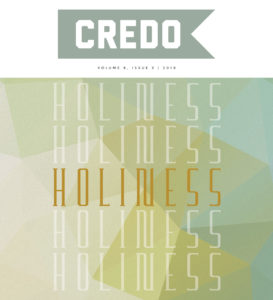The Word of God being completely infallible and true brings authority and inspiration for the Christian life. The discipline of archaeology can be complex for Christians to understand. Specifically, what evidence exists about the Bible and can we trust the sources? The ESV Archaeology Study Bible seeks to provide the confirmation needed to help understand the authority of Scripture and how to apply it. Consider the features below:
infallible and true brings authority and inspiration for the Christian life. The discipline of archaeology can be complex for Christians to understand. Specifically, what evidence exists about the Bible and can we trust the sources? The ESV Archaeology Study Bible seeks to provide the confirmation needed to help understand the authority of Scripture and how to apply it. Consider the features below:
- Sidebars about specific geographical places, influential people, and symbols in the text
- Specific notes on passages of scripture and how they bring the text to a clear understanding.
- The brief articles at the beginning of the Old and New Testament
- Ancient text charts
- Detailed introductions for each book and how archaeology applies to the text.
The ESV Archeology Study Bible brings Christians closer to the understanding of the authority of Scripture. John Currid explains that the goal of archaeology “is to discover, observe, preserve and record the buried remains of antiquity and to use them to help reconstruct ancient life” (XX). We see in that statement alone that the observation and preservation of ancient artifacts are crucial to the understanding of God’s word. While the editors clearly affirm the historical accuracy of the Bible, there is a healthy dose of disagreement on specifics in the historical accounts. This helps the reader when examining dates and geographical locations to see the whole perspective of archaeology. Out of the thirteen contributors to the text, Professors Steven M. Ortiz and John Currid give special attention to early Old Testament books that are helpful in many debates on the reliability of the Bible. The ESV Archeology Study Bible brings Christians closer to the understanding of the authority of Scripture. Click To Tweet
The Bible’s key strength is the detailed notes below the text that give insight into the artifacts and typology that bring the verses together. This approach brings a clear understanding of what is stated and describes the symbols or places that are not mentioned specifically in Scripture. For example, in 1 Chronicles 20:2, the reader is informed of the “crown” that David took from Saul and how it was used only for specific times because the “crown weighs a full talent of gold-75 pounds” (589). Another example is in Romans 3:2. The phrase “oracles of God” refers to “the books of the OT” the notes go further and detail how “Paul is making the OT relevant and more clearly authoritative” (1676). These notes serve the reader well by giving clear insight into the details of important pieces of history while also reemphasizing the importance of all of scripture.
The maps help the reader understand the geography of the times and bring the text to life. The reader will see in 1 Samuel 3–7 the map of the travels of the Ark of the Covenant (384). The notes in this map detail trials Israel experienced while from moving across all Philistia. It is worth the time to examine these geographical images to help in sermon preparation and overall knowledge of the text.
The articles throughout the text are influential for trying to grasp the text and how to apply it. Specifically, the article by John Currid titled “Expository preaching and Archaeology” attempts to encourage and empower the local pastor on how to use archaeology to proclaim the gospel. The priority for archaeology in preaching is because “it helps the person in the pew see that the Bible is grounded in history” (1926). History matters and applying historical accounts and images will only help gospel ministry.
In a variety of ways, the ESV Archaeology Study Bible brings all aspects of what archaeology is and how we should use it to advance our knowledge of God’s word. The book is clearly up to date in all accounts and helps give a balanced approach to biblical orthodoxy, while also laying out different sides of arguments. The accessibility of the text is what stands out to readers. The quality of images and the detailed understanding of what each verse means historically is beneficial for readers. This study Bible will bring great reward for anyone’s ministry in a culture that seeks credibility of the Scriptures.


